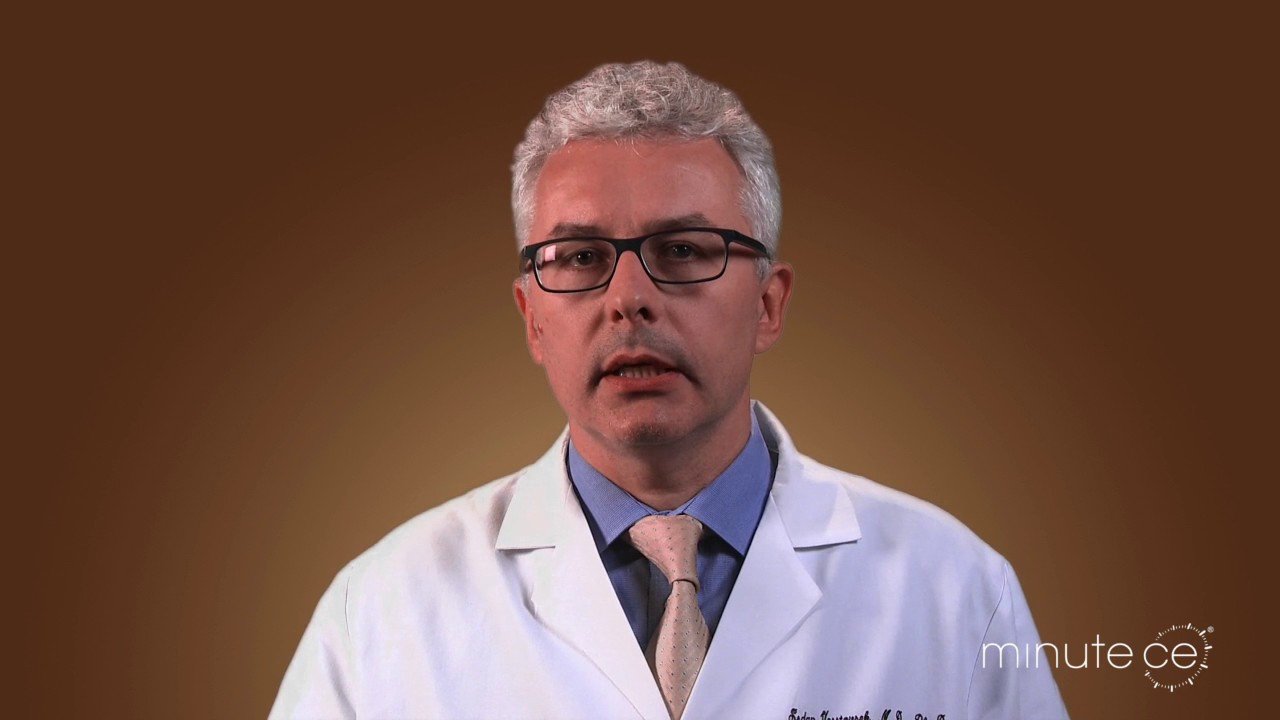Hello, my name is Srdan Verstovsek. I am a professor of medicine in the leukemia department at MD Anderson Cancer Center in Houston, Texas. Today I want to speak to you about the role and interpretation of JAK mutational screening in polycythemia vera. Now, polycythemia vera is one of myeloproliferative neoplasms.
As we know, JAK-STAT pathway hyperactivity is the main biological abnormality in all myeloproliferative neoplasms, including polycythemia vera. This is depicted on this slide. We have, in a normal situation, growth factors, like erythropoietin, attaching itself to receptors on the surface of the bone marrow cells and activating the JAK-STAT pathway, making cells grow.
In a diseased state, like polycythemia vera, there is no need for growth factors, and that is because of a multiple different reasons. The JAK-STAT pathway is hyperactive, and particularly in polycythemia vera, the main reason for hyperactivity in almost all patients is mutation in a JAK2 gene.
There are 2 types of JAK2 mutations in PV. In about 95% of the patients, the JAK2 mutation is called JAK2 V617F mutation. Again, this would activate the JAK-STAT pathway without the need of a growth factor to attach to the receptors. It is always active.
There is another JAK2 mutation called JAK2 exon 12 mutation. This is only present in about 2 to 3% of the PV cases. Typically these patients present with isolated erythrocytosis but have a similar rate of transformation to myelofibrosis, acute myeloid leukemia, or thrombosis. Where do we put this information in our everyday practice?
We put it when we come up with a diagnosis of polycythemia vera. This is where the testing for the presence or absence of JAK mutations comes handy. The WHO classification for myeloproliferative neoplasms have recently been updated, and here we show a criteria for polycythemia vera highlighting the identification either of
JAK2 V617F mutation or JAK2 exon 12 mutation as a part of a diagnostic process. Important to say, there still exists a patient out there that does not have a mutation in a JAK2 mutation. It is not mandatory for all the patients to have that mutation identified.
Now, the next question is how about tumor load? That means how many cells in blood have a JAK2 mutation, more or less, and does this matter for the outcome of the patient? Significance of a JAK2 V617F allele burden in polycythemia vera has been studied.
The patients that have a higher tumor burden—meaning more than 50% of the cells in a patient’s sample have the mutation, which is more than 50% allele burden—these patients appear to have a worse outcome as we follow them along their life. They may have leukocytosis, higher hematocrit, more splenomegaly, more symptoms, and high
Risk of transformation, in general, more aggressive disease. However, they do not have a high incidence of cardiovascular events, which is the main target for the therapy. Therefore, at this point in time, measuring JAK2 V617F allele burden has little value for management of PV patients.
A very attractive part of new developments in a polycythemia vera in terms of therapies is possibility of some of them—and here I show Interferon—to be able to decrease the JAK2 allele burden, perhaps even eliminate the number of cells in the blood or bone marrow that have a JAK2 mutation.
We don’t really understand the significance of this achievement with the different therapies. With Interferon, for example, up to 20 to 25% of the patients may become JAK2 V617F negative. However, we are cognizant of a persistence of the disease despite the elimination of the JAK2-positive cells.
Therefore, in every practice, one should not judge the efficacy of a therapy or modify the therapy based on a measurement of the JAK2 allele burden. In summary, the JAK-STAT pathway hyperactivity is the main biological abnormality in PV, as is in other myeloproliferative neoplasms.
Almost all patients with PV have mutation in JAK2 gene, either in JAK2 V617F, which is the great majority of the patients, or in JAK2 exon 12 mutations in a few percentage points. There is no difference in their outcome based on the mutational profile, and identification
Of the JAK2 mutation, one or the other, helped in the diagnosis of PV. Measuring JAK2 allele burden during therapy or a life of a patient, at this point in time, has little value.
#Role #Interpretation #JAK #Mutational #Screening
